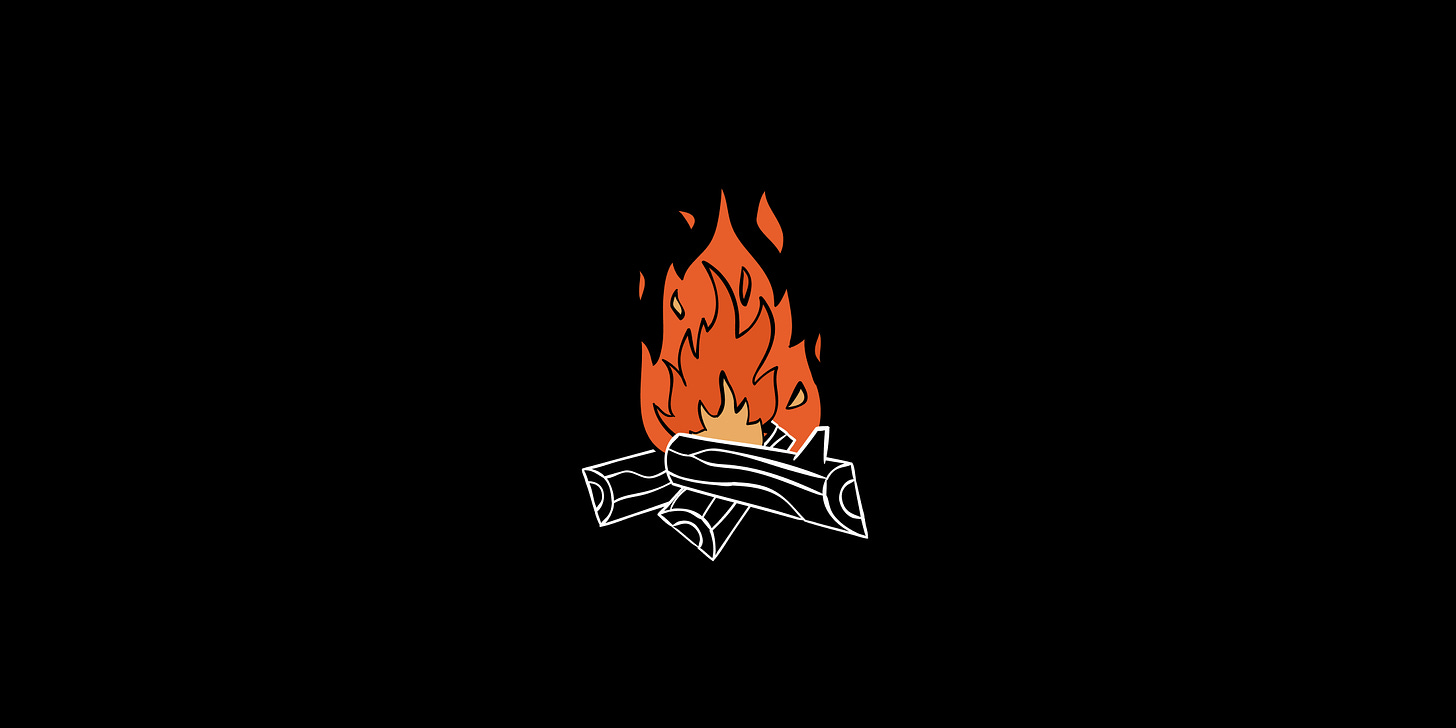🔥 Campfire 15
What practices can help me get better at visual design?

Updates from Alex's Camp
Earlier this week, I published a new article highlighting lessons from building design systems for multi-billion brands. You can read the full article by clicking the link below (if you missed it).
Building design systems for multi-billion brands
Okay, to the Campfire!
One of the most asked questions I get from readers is how to get better at visual design. It's a part most beginners are struggling with. So I want to give you my take on this question and some insights I've learned.
What practices can help me get better at visual design?
Over the course of my career, I’ve put thousands of hours into learning, practicing, and teaching visual design. From this experience, I’ve discovered three core pieces of any great visual design:
Use of space
Use of color
Use of typography
Space
Space between elements makes design visually pleasing. It gives the design breath, helps highlight elements that need attention, creates balance, and builds the structure. This principle is well used in modern and minimalist designs.
"Music is the silence between the notes" — Mozart
Empty space around objects is commonly called white space. However, you need to know that it doesn’t have to be exactly white. Although, it often is.
Previously, white space could have simply been a vacuum where you hadn't yet decided what to do with it. However, it is now an active design element.
There are many different types of spaces in design: white/blank/empty space, margins, paddings, gutters, letter-spacings, line-spacings, and much more. All of them serve a single purpose: ensure that everything is balanced.
Color
Color is used to attract attention, group related elements, convey meaning, and enhance the overall aesthetics of your design. Similar to space, color can be used to organize elements and create a visual hierarchy in your design.
“Colors, like features, follow the changes of the emotions.” — Pablo Picasso
Color is all about perception. Our eyes see something (for example, the sky), and information transmitted from our eyes to our brains tells us it's a particular color (blue). Objects reflect light in a variety of wavelength combinations. Our brains pick up these wavelength combinations and translate them into the phenomenon we name color.
What do you look for when you're strolling down the soft drink aisle, scanning the racks filled with 82 million cans and bottles in search of your six-pack of Coke? Is it the written logo or the well-known red can?
Studies show that people make a decision about whether they like a product or not in less than 90 seconds. And 90% of that decision is impacted by the color.
Typography
Typography allows designers to use text as a visual to convey the right feelings connected to the message. Using the right fonts for design helps make it look readable and more accessible, grabs the viewer’s attention, establishes hierarchy, and creates harmony.
“It is almost impossible to look and read at the same time: they are different actions.” ― Gerard Unger
Selecting a font for your design is not a random process. You can’t simply go through your font catalog to choose a font you like and use it.
This is because there’s psychology linked to certain typefaces. When designing, you need to make sure your type is connecting and communicating to your audience.
It’s also about ensuring that the font you use fits your market. You wouldn’t use elaborate and rainbow-colored fonts for a law firm brochure, right?
Conclusion
Remember, there’s much more to design than spacing, color, and typography. But mastering these three core pillars will put you in the top 20% of designers that do great work.
